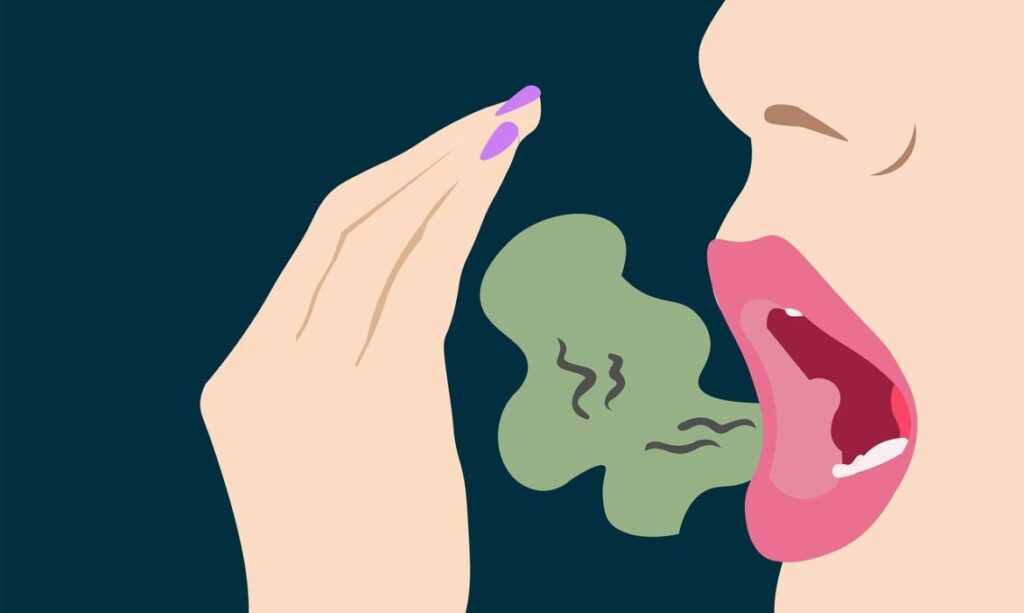The anxiety is valid. You’re having a deep conversation with a friend when all of a sudden, an unsettling smell hits you. Your breath, maybe? Your mind wanders, and all you can think about is making a hasty exit and looking for gum, mouthwash, or any other remedy for bad breath.
Causes of Bad Breath – And How to Get Rid of It
We’ve all experienced halitosis, or bad breath, at some point in our lives. Most people want to stay away from this issue, whether we’re the guilty parties or the victims. Thankfully, there are a number of ways to prevent and treat halitosis so that you don’t have to make awkward excuses for having bad breath.
Three (3) Tips to Maintain a Fresh and Clean Mouth:
Eat less potent foods:
When you eat a meal that contains a lot of garlic, onions, or other flavorful but unpleasant ingredients, your body receives nutrients as the food is digested and absorbed into your bloodstream. Unfortunately, the smell of your delicious meal hitches a ride and ends up in your lungs, where it taints your breath. Brushing, flossing, and mouthwash rinsing are quick fixes for bad breath, but they are only a band-aid because the source of the odor is in the lungs.
Try to reduce your intake of garlic, onions, some types of fish, and meaty meals to preserve your breath. A glass of milk during or after a meal has been known to help deodorize breath if you want to treat yourself but don’t want to deal with the pervasive stench.
Keep hydrated
Saliva is crucial to maintaining good oral health. Its primary function is to clear your mouth of the minute food fragments that adhere to your teeth and gums. Those food fragments become a tasty treat for bacteria without some spittle. The bacteria multiply and emit more odor as they munch on the tiny bits of food that are left behind. Gross!
“Dry mouth” is another term for the absence of saliva in the mouth. Numerous factors, including:
- Some prescription medications, can result in dry mouth.
- Disease and chronic illness
- dehydration;
- Consuming caffeine and alcohol
Fortunately, dry mouth can be easily avoided. A piece of sugar-free gum can help your saliva flow and give your mouth a burst of minty freshness. A further straightforward tactic is to replace that second cup of coffee or glass of wine with a cool glass of water. A simple glass of water can quench your body’s thirst and flush out bothersome food particles and oral bacteria, which can help you fight dry mouth. Inform your doctor if quick fixes aren’t working so that he or she can recommend a more sensible course of action.
Your general health (Make appointments for yearly checkups)
If we have allergies or a cold, which can cause postnasal drip, we might notice that our health and breath are both suffering. A foul odor is produced by the bacteria that thrive in all that extra mucus.
Chronic conditions have also been known to affect breathing in addition to acute illnesses. Halitosis can be caused by a variety of ailments, including kidney, liver, and gum disease. Make sure you receive yearly wellness exams to identify and address any underlying medical conditions. Your breath will follow once your general health does.Additionally, using tobacco products will guarantee that a close conversation will smell bad. In addition to the stench that tobacco smoke naturally emits, smoking-related oral health issues can result in painful and chronic conditions like gum disease and oral cancer.
CONCLUSION
Despite the many causes of halitosis, maintaining good oral hygiene is still the most important and well-known way to get rid of bad breath. This calls for regular flossing and at least two daily brushings. Use mouthwash as additional coverage and experiment with a tongue scraper. Your hygiene and health will both benefit greatly from clearing out any additional food particles and bacteria. Here’s to having a fresh, clean mouth!

